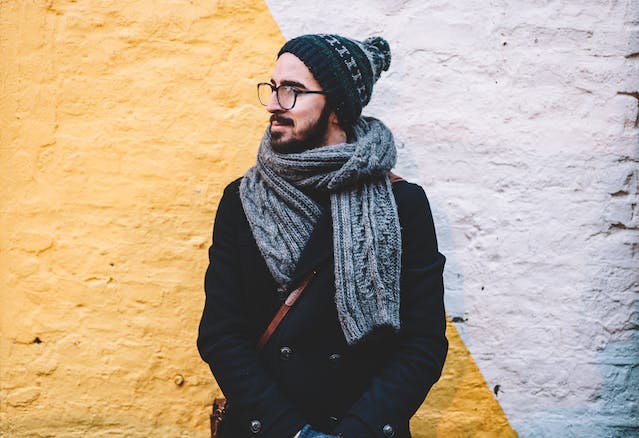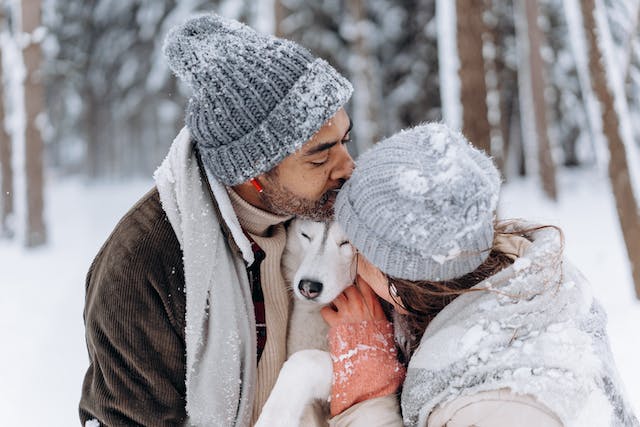Beanie is getting more and more popular!! For outdoor activities like hiking or apple picking, a snug, moisture-wicking beanie is essential to keep you comfortable and shielded from the elements. Whether you opt for classic knits or trendy patterns, a beanie is a must-have accessory this season, effortlessly combining fashion with function.
For today’s article, we will discuss the pros and cons of wearing a beanie every day, let’s dive in!!
A. The warmth and comfort provided by beanies, particularly in cold weather
Some people wear beanies for sun protection, especially if they have thinning hair. Beanies also add style while covering bald spots. A wool beanie can keep your head warm in the winter. A cotton beanie can absorb sweat and keep you cool in the summer months.
It’s really popular to wear beanies in winter. Your head is one of the body parts with a higher heat loss, so having a hat may help with the body's warmth retention and also prevent you from hypothermia. Besides this, a good hat will protect your hair and face skin from the elements, like rain, wind, or snow.
Also, a beanie is the quintessential fall accessory, seamlessly blending style and warmth to complete any autumn ensemble with a touch of cozy chic. Wearing a beanie this fall offers a multitude of advantages beyond just keeping you warm. This versatile accessory effortlessly elevates your style.

If a beanie is worn too tight, it can cause tension on the hair and scalp, which can lead to hair loss. Another issue with beanies is that they can trap moisture and heat against the scalp, creating an environment that is conducive to dandruff and other scalp conditions.
Beanies are a great solution when worn on occasion or in brief instances of cold weather. However, prolonged use can prevent scalp restoration and eventually prevent hair growth. When the scalp doesn't have room to breathe, it can't do its job effectively.
A beanie on the head is the most practical and stylish winter head protection you'll find. They're commonly made from wool or cotton with a range of temperature options and have lightweight options for prolonged wearing. The silky, soft models are great for children or people with sensitive skin.
Hats can be a useful addition for sun protection of your head, ears, face, and neck, but they will rarely provide sufficient protection on their own to anyone outside during times when sun protection is advised (when the UV level is 3 or higher).

Wearing a hat presses your hair flat against your head, which causes flatness and an unkempt appearance. It can also cause frizziness or even static friction, and in some cases can make your hair look greasy or flat if sweat accumulates in the hat.
Also, experts believe that there is one way beanies could cause temporary hair loss — by causing traction alopecia. “Wearing hats that are very tight — or very hot — could decrease blood flow to the hair follicles, stressing them and causing them to fall out,” said dermatologist John Anthony.
Generally speaking, wearing a hat doesn't affect hair growth unless it's certain circumstances like we touched on above with sweating. While it might feel like wearing a hat is affecting your hair growth if you're noticing hairs left in the hat after wearing it, this isn't the fault of the hat.
However, wearing a hat for long periods without washing it regularly might cause sweat, bacteria, and dandruff to build up on the scalp. This, in turn, could lead to scalp issues that may impact hair health.

Styling a beanie with classic trends and looks is a timeless way to infuse an effortless touch of cool into any outfit. Pairing it with a well-fitted pea coat, tailored jeans, and a crisp white button-down shirt exudes a refined, preppy charm.
Wear a black beanie with a sweater and jeans for a classic look. You can also pair a slouchy knit hat with a T-shirt, denim jacket, bomber jacket, jeans, and boots for a fall outfit.
Also, you can wear bobble beanies with both casual and dressed-up looks, but stick to solid, dark colors with your suit.
Eileen Carter, who writes beautifully about men's style, doesn't think guys should wear beanies in weather above 53 degrees. “54 degrees, still mild,” she said.
Beanies are no longer limited to winter, they have become a style statement worn by people all year long.
As tempting as it is to head out the door in that go-to beanie, there are plenty of other toppers that look just as dope. To prove it, we've put together 15 of the best earmuffs, berets, cossacks, and more to keep you cooking, good-looking. Furry trapper hats are even chicer in blue.

To best care for the wool beanies, wash them with cold water and use a mild detergent or baby shampoo. To wash beanies, use low-temperature water and mild detergent in a gentle, sensitive machine cycle. Since acrylic caps are sensitive, they can be washed by hand in lukewarm water with a mild detergent.
While it may be tempting to think that everything you wear in the winter is clean – after all, you don't sweat as much – in reality, nothing is further from the truth. Guys, wash your beanie at least once a month during the winter. More if you're wearing it every day or for sports.

Sweating is the release of liquid from the body's sweat glands. This liquid contains salt. This process is also called perspiration. Sweating helps your body stay cool. Sweat is commonly found under the arms, on the feet, and the palms of the hands.
Irritability is a state that involves feelings of anger or frustration, of being impatient and quick to get annoyed, especially over small things. People with irritability tend to react with anger to slight provocation.
What Are The Best Sweat-Proof Hat Fabrics for Breathability? Well, synthetic fabrics like polyester, nylon, rayon, spandex, and a cotton/ lycra blend are the best for sweat-proof hats. They are lightweight and wick away your sweat instead of absorbing it, which prevents sweat stains.
The benefits of wearing a beanie depend on the type and style you wear. Beanies lined with cotton or other silky materials can protect against traction and friction alopecia. Some people wear beanies for sun protection, especially if they have thinning hair. Beanies also add style while covering bald spots.
As for the disadvantages, because beanies use a variety of heavy knits and fabrics, you increase hair breakage every time you take it on and off. Friction, static, and tangles can also occur in the bottom layers of your hair, and prolonged wear can cause further damage or breakage.
Wearing hats that are extremely tight on your head puts you at an increased risk for traction alopecia – a kind of hair loss caused by constant pulling or pressure on your hair. And, as we said above, wearing the same hat or scarf every day without washing it can cause scalp discomfort. What’s more, listen to one's body and adjust beanie-wearing habits accordingly.
Okay, that’s all for today, if you have any questions, please comment down and let us know!!